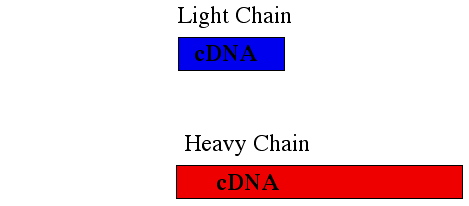Anti-HIV Monoclonal Antibody Produce in Corn
Koreen Ramessar, et al., 2008. PNAS.
105 (10): 3727 - 3732.
A human monoclonal antibody (mAb) called 2G12 is very effective at blocking HIV binding to CD4. HIV binds to human cells via the viral protein called gp160 which is composed of two subunits, gp120 and gp41. gp160 binds to the human protein called CD4 on the surface of T helper cells, an important subset of our white blood cells.
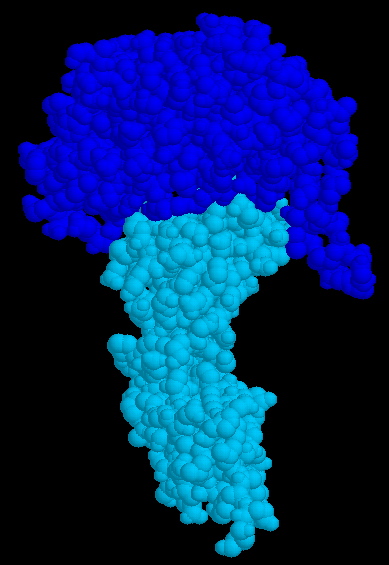
Figure 1. Space fill model
of HIV's envelop protein called gp160.
The two subunits are gp120 (dark blue) and gp41 (light blue).
The epitope for 2G12 is on a core portion of gp120 that does not mutate very much. The investigators wanted to see if genetic engineering of corn (maize) could produce an equally effective 2G12. Plants are easy to grow and we have methods for mass production of their seeds.
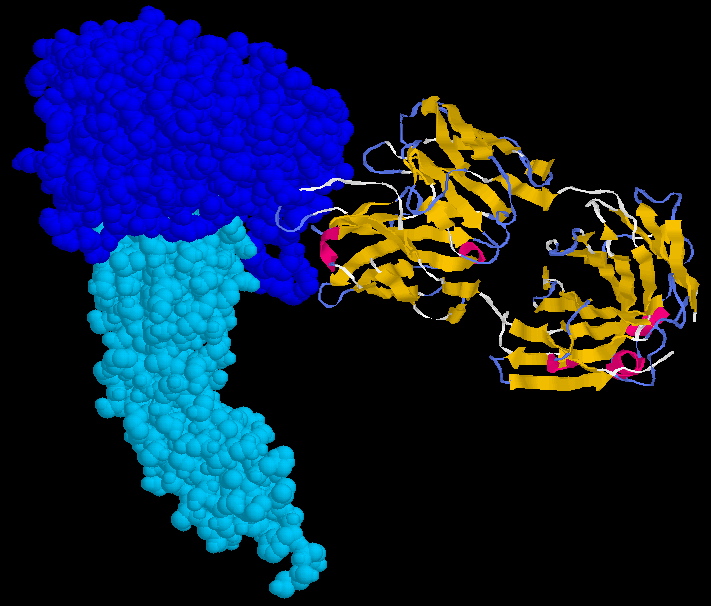
Figure 2. The active portion
of a mAb is shown with beta strands in yellow, alpha helices in red,
turns
in blue and no secondary structure in white. This antibody
binds to gp120.
To begin, the investigators isolated the cDNA for the light and heavy chains of 2G12. They had to clone the two cDNAs into a pair of plasmids that could be grown in E. coli. The cDNAs needed to encode the secreted form of the antibody heavy chain.
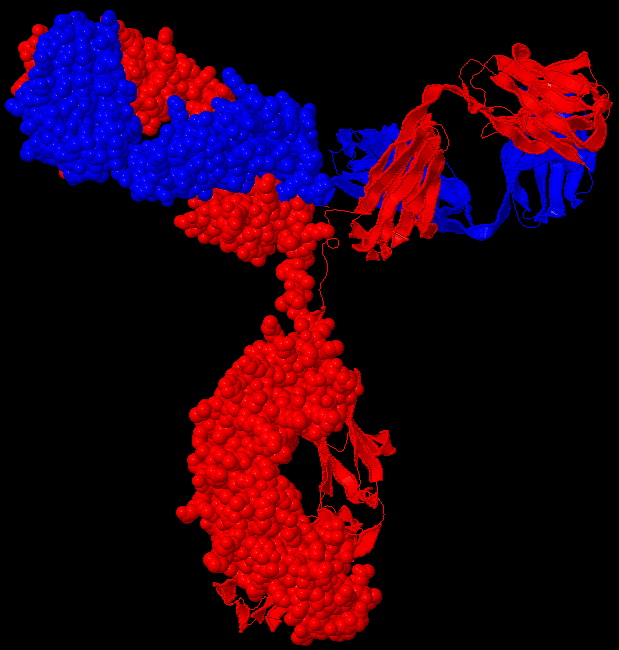
Figure 3. A human antibody with two identical heavy chains colored red and two identical light chains colored blue. The left side is shown in spacefill while the right side is shown in cartoon format.
The cloned cDNAs needed to be transcribed in the correct maize cells - endosperm. How did they control transcription (and thus translation) of these two subunits of the mAb? Mouse over the figure below to check your answer.
Figure 4. Light
chain and heavy chain cDNAs encoding the secreted version of mAb 2G12.
Mouse over this figure after you have guessed how the investigators regulated
the
production of "plantibody" 2G12 to be restricted to only the endosperm
cells.
Once the cDNAs were ready for transcription in maize endosperm cells, they needed to insert the DNA into the cells. For this step, they used the gene gun. Gene guns shoot gold pellets coated with DNA into cells.

Figure 5. This version of
the gene gun delivers the
DNA-coated gold particles from the open black end.
They bred the transgenic maize plants for maximum production of the "plantibody" 2G12. They purified 2G12 in two very easy steps and ran the proteins on an SDS-PAGE gel to visualize the purification process and the two subunits of 2G12.
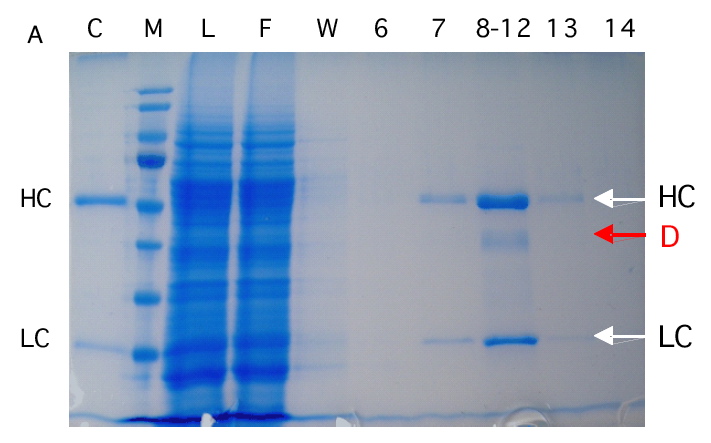
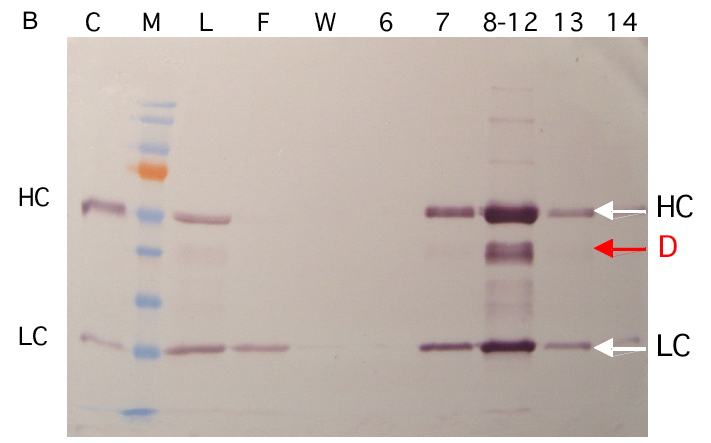
Figure 6. The blue gel (panel A) separated the plant proteins on by SDS-PAGE. The bottom gray image (panel B) is a western blot to detect all antibody proteins. Lanes: C = control bands of purified heavy and light chains; M = molecular weights; L = loading of all endosperm cell porteins prior to purification; F = flow through after initial purification; W = washing after purification; 6 - 14 are different elution fractions from the purification process. HC = heavy chain; LC = light chain; D = degraded heavy chain.
The most important step was testing whether maize-2G12 was able to block HIV binding. They used a common measure of effectiveness called IC50 (50% inhibition concentration). An IC50 is the concentration of a substance that abolishes half of the activity, in this case half of HIV binding. The lower the IC50 concentration, the more potent the substance is. They compared maize and a common cell type for mammalian tissue culture called CHO (chinese hamster ovary) cells.
| IC50 of 2G12 from Two Sources | |
|---|---|
Maize |
2.88 µg/mL |
CHO cells |
8.11 µg/mL |
Surprisingly, the "plantibodies" were about 3 times more effective than the CHO-produced anitbodies. This could be very helpful as a way to produce spermacides that block HIV binding and may also prove useful for emergency application for medical workers exposed to bodily fluids.
Go to the Biology Dept. Main Page
© Copyright 2008 Department of Biology,
Davidson College, Davidson, NC 28036
Send comments, questions, and suggestions to: macampbell@davidson.edu
